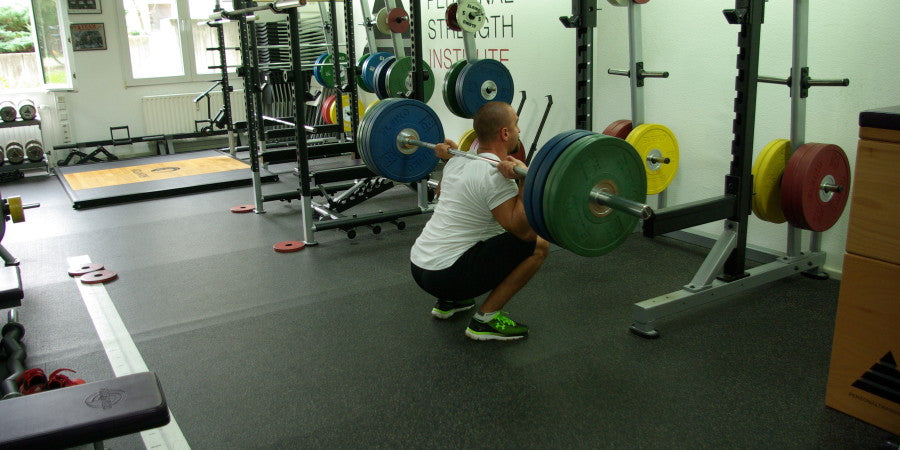Originally published in Functional Training Magazine
One of the benefits of pausing in the mechanically unfavorable position is the reduction of the stretch reflex and the resulting energy stored in the fascia, resulting in higher muscle fiber recruitment.
What is the stretch reflex?
The stretch reflex, often called the myostatic reflex, is the body's pre-programmed response to a muscle stretch stimulus, such as that at the end of an eccentric contraction. This is a protective measure taken by the muscle to prevent a muscle tear. On the one hand it is a reaction of the muscle spindle cells, on the other hand it is elastic energy that is stored in the fascia. This stretch reflex helps initiate the concentric contraction. This is why it's easier to squat through the tipping point from eccentric to concentric contraction in the bottom position with a "bounce" that uses the stretch reflex. Instead of overcoming the turning point in a controlled manner and thus having to recruit more muscle fibers, the stretch reflex via "bounce" is often used, especially by beginners. The main disadvantages of this are an increased risk of injury and a lower potential for progression of the power output of the stretch reflex compared to the power output of the voluntary muscle contraction.
The stretch reflex as a training tool has its task in particular in exercises such as pull-ups and squats in advanced athletes, such as sprinting or weightlifting.
A pause at the reversal point from eccentric to concentric contraction, as in the Klokov Squat, reduces this stretch reflex, forcing the lifter to develop more control and recruit more muscle fibers.
The reduction of the stretch reflex in relation to the pause behaves as follows:
1 second – 50-60%
2 seconds - 80-90%
3 seconds - 100%
For advanced lifters with high maximum strength, these times may vary as they may be able to sustain the stretch reflex for longer.
Another benefit of the pause is that it makes it easier to optimize technique and body position, especially in the lower parts. Especially when optimizing posture in the bottom position, the elbow position under the barbell is crucial to straighten the chest, reduce the horizontal distance from the barbell to the fifth lumbar vertebra – and thus the load on the lower back – and recruit more fibers of the vastus mediales.
The Klokov Squat is an advanced squat variation to increase control in the eccentric and low position.
The "spread" - the difference between the lightest and heaviest set of a unit - should be about 30% in the Klokov Squat in order to enable a qualitatively high stimulus density and constant progress from unit to unit.
The Klokov Squat is excellent for the following scenarios:
– To increase maximum and relative strength.
– To overcome a plateau in squat performance.
- For trainees whose limiting factor is control of deflating.
– For exercisers whose limiting factor is control in the lowest position.
- For athletes in power sports such as discus, shot put and bobsleigh.
- For athletes in weight class sports who want to build strength without increasing body weight, such as judo, wrestling and MMA.
The best performance of a YPSI customer is 210kg ( Thomas Dybdahl from Aarhus, Denmark)
https://www.youtube.com/watch?v=D6Kdr5-LGFY
Dmitry Klokov's documented personal best is 250kg.
https://www.youtube.com/watch?v=48kIsQkVoVo
Good luck with the Klokov Squat!
Image: YPSI Coach Goran Sirovina demonstrates optimal posture in the bottom position of an LH squat.

